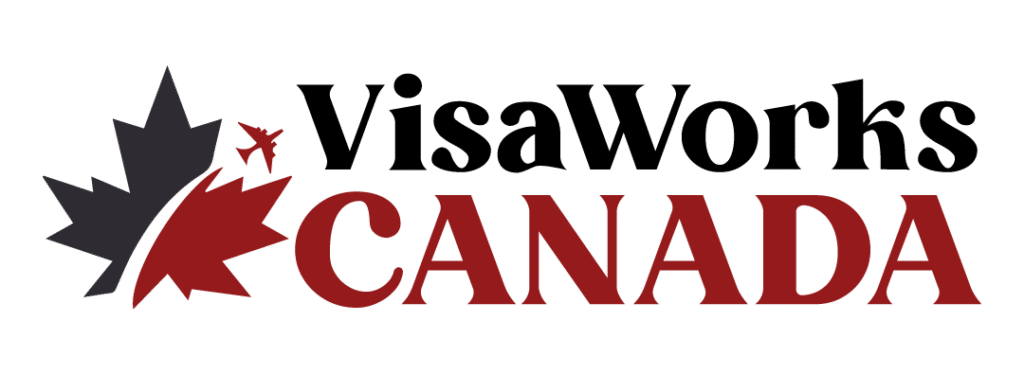Canada’s dynamic economy often faces labor shortages, and to bridge this gap, the Temporary Foreign Worker Program (TFWP) comes into play. In collaboration with Immigration, Refugees and Citizenship Canada (IRCC) and Employment and Social Development Canada (ESDC). The TFWP serves as a crucial avenue for Canadian employers to temporarily hire skilled foreign nationals. Understanding the key components of this program is vital for both employers seeking talent and individuals eager to work in the Great White North.
Key Characteristics of TFWP
At the heart of the TFWP lies the Labour Market Impact Assessment (LMIA), a pivotal requirement for employers. An LMIA is a document issued by ESDC, assessing the potential impact of hiring a foreign worker on the Canadian labor market. A positive LMIA signifies a genuine need for a foreign worker, while a negative one suggests that the position could be filled by a Canadian citizen or permanent resident. This distinction is crucial as it determines whether an employer can proceed with hiring a foreign national.
Labour Market Impact Assessments (LMIAs)
Understanding LMIAs is fundamental for employers navigating the TFWP. A Labour Market Impact Assessment (LMIA) is a crucial element in the Canadian immigration process, specifically for employers looking to hire foreign workers. Essentially, an LMIA is a document obtained by Canadian employers to demonstrate the necessity of hiring a foreign worker when a Canadian citizen or permanent resident is not available for the position.
Purpose:
The primary purpose of an LMIA is to ensure that hiring a foreign worker will not negatively impact the Canadian job market. It assesses factors such as the job market need, the impact on wages, and the potential for job displacement among Canadian workers.
By requiring employers to obtain an LMIA, Canada aims to strike a balance between addressing labor shortages and safeguarding the opportunities for its citizens and permanent residents.
Positive and Negative LMIAs
Positive LMIA
A Positive LMIA is issued when it is determined that hiring a foreign worker will have a positive or neutral impact on the Canadian job market. This means that the employer has demonstrated a genuine need for hiring a foreign worker and has made efforts to hire locally.
Intent:
Positive LMIAs are crucial for foreign workers seeking employment in Canada. With a Positive LMIA in hand, foreign workers can proceed with their work permit applications, confident that their employment is not causing any adverse effects on the Canadian job market.
Negative LMIA
Conversely, a Negative LMIA is issued when hiring a foreign worker is deemed to have a negative impact on the Canadian job market. This usually occurs when an employer has not adequately demonstrated efforts to hire locally or when there is an oversupply of workers in a particular occupation.
Addressing Concerns:
For employers receiving a Negative LMIA, it is essential to reassess their hiring strategies and potentially collaborate with Canadian employment agencies to ensure compliance with local hiring practices.
Application Requirements and Procedures for LMIA
Employer Eligibility
Before applying for an LMIA, employers must meet certain eligibility criteria. This includes providing evidence of genuine recruitment efforts to hire Canadian citizens or permanent residents.
Documentation:
Employers are required to submit detailed job descriptions, proof of recruitment efforts, and information about the wage offered to the foreign worker.
LMIA Application Process
The LMIA application process involves submitting a comprehensive application to Employment and Social Development Canada (ESDC). This includes completing the necessary forms, paying the applicable fees, and providing all required supporting documentation.
Timeline:
The processing time for an LMIA application varies but typically takes several weeks. Employers should plan accordingly to ensure a smooth and timely hiring process.
International Mobility Program (IMP)
For employers seeking a more streamlined process, the International Mobility Program (IMP) offers an alternative. Under IMP, certain work permit applications are exempt from the LMIA requirement, provided specific conditions are met. These exemptions hinge on factors such as broader economic advantages for Canada and reciprocal benefits enjoyed by Canadians and permanent residents.
Confirming Eligibility
To leverage IMP, employers must first confirm that the position or worker qualifies for an LMIA exemption. This involves aligning with the outlined conditions and ensuring that the hiring decision aligns with broader economic or cultural advantages for Canada.
Paying the Employer Compliance Fee
A nominal employer compliance fee is the next step. This fee underscores the commitment of the employer to adhere to program regulations and facilitates the processing of the application.
Submitting the Job Offer
The final step involves submitting the official job offer through the IMP’s Employer Portal. This meticulous process ensures that the foreign national can subsequently apply for their work permit.
In-Home Caregivers
Recognizing the unique needs of families, the TFWP introduces the In-Home Caregivers stream. Designed for those seeking caregivers for children or individuals with high medical needs, this stream provides families with the flexibility to hire temporary foreign workers. The impending launch of two new immigration pilot programs for caregivers in 2019 adds an additional layer of opportunity for families requiring specialized care.
Introduction to In-Home Caregivers Stream
The In-Home Caregivers stream of the Temporary Foreign Worker Program (TFWP) in Canada is a specialized avenue designed to address the needs of families requiring assistance with childcare or individuals with high medical needs. This program facilitates the employment of foreign caregivers who play a crucial role in supporting Canadian families while contributing to the workforce.
Purpose: The primary purpose of the In-Home Caregivers stream is to bridge the gap for families in need of dedicated support for their children or individuals requiring assistance due to high medical needs.
Criteria for Hiring Caregivers for Children and Persons with High Medical Needs
Childcare Providers
When hiring caregivers for children, families must ensure that the selected candidate possesses the necessary skills and experience to provide a safe and nurturing environment. This includes a genuine love for children, basic childcare training, and the ability to respond effectively to a child’s needs.
Qualifications: Caregivers for children often require a background in early childhood education or related fields, demonstrating their ability to contribute positively to a child’s development.
Medical Caregivers
For individuals with high medical needs, the criteria for hiring caregivers extend to specialized medical training. Caregivers must be equipped to handle specific medical conditions, administer medications, and provide necessary support tailored to the individual’s health requirements.
Training and Certification: Medical caregivers typically need formal training in healthcare, nursing, or a related field, ensuring they can competently address the unique challenges associated with high medical needs.
Launch of New Immigration Pilot Programs for Caregivers in 2019
In response to evolving immigration needs, Canada introduced new immigration pilot programs for caregivers in 2019. These pilot programs aim to streamline the immigration process for caregivers, providing more accessible pathways to permanent residency.
Key Features: The pilot programs offer caregivers the opportunity to apply for permanent residence after acquiring two years of Canadian work experience. This shift in policy reflects Canada’s commitment to recognizing the essential contributions of caregivers and providing them with a more secure and stable future in the country.
Conclusion: The In-Home Caregivers stream plays a pivotal role in addressing the specific needs of Canadian families and individuals with high medical requirements. As the landscape of caregiver immigration evolves with the introduction of pilot programs, it underscores Canada’s dedication to fostering a supportive environment for both caregivers and the families they assist.
Also Read: Who is Eligible for a Work Permit in Canada?
Requirements for Temporary Foreign Workers
Embarking on a journey as a temporary foreign worker in Canada requires careful consideration of the program’s stringent requirements. Foremost among these is the imperative Labor Market Impact Assessment (LMIA). This document certifies that the employer diligently sought a Canadian candidate and establishes the genuine need for a foreign worker.
Additional Requirements
Beyond the LMIA, temporary foreign workers must meet a range of prerequisites. These include having a job in Canada, proving the intent to leave after the work permit expires, showcasing financial capacity to sustain their stay, and demonstrating a clean criminal record and good health.
How to Apply for TFWP
Navigating the TFWP application process involves a strategic sequence of steps. The journey commences with securing a job offer from a Canadian employer, an indispensable prerequisite for all Canadian work visas.
Get a Job Offer in Canada
Initiating the process requires aspiring foreign workers to actively seek employment in Canada. Online job portals, government resources like the Canadian Job Bank, and networking can serve as effective channels to secure a valid job offer.
Get the LMIA
Once armed with a job offer, the employer must then apply for the LMIA through ESDC. This critical step involves a meticulous assessment of the potential impact on the Canadian labor market, determining the necessity of hiring a foreign worker.
Apply for the Work Visa and Permit
With the LMIA approval in hand, the final leg of the journey involves applying for the work visa and permit. This step demands precision and adherence to the guidelines set by the Canadian Consulate, either through their online portal or in-person visits.
Conclusion
In conclusion, the Temporary Foreign Worker Program stands as a gateway to economic opportunities for both employers and skilled individuals. Understanding the intricacies of LMIA, exploring the avenues offered by IMP, and recognizing specialized streams like In-Home Caregivers are essential for a successful foray into the Canadian workforce. By meeting the stringent requirements and following a systematic application process, temporary foreign workers can unlock the doors to a fulfilling professional journey in the vibrant landscape of Canada.






